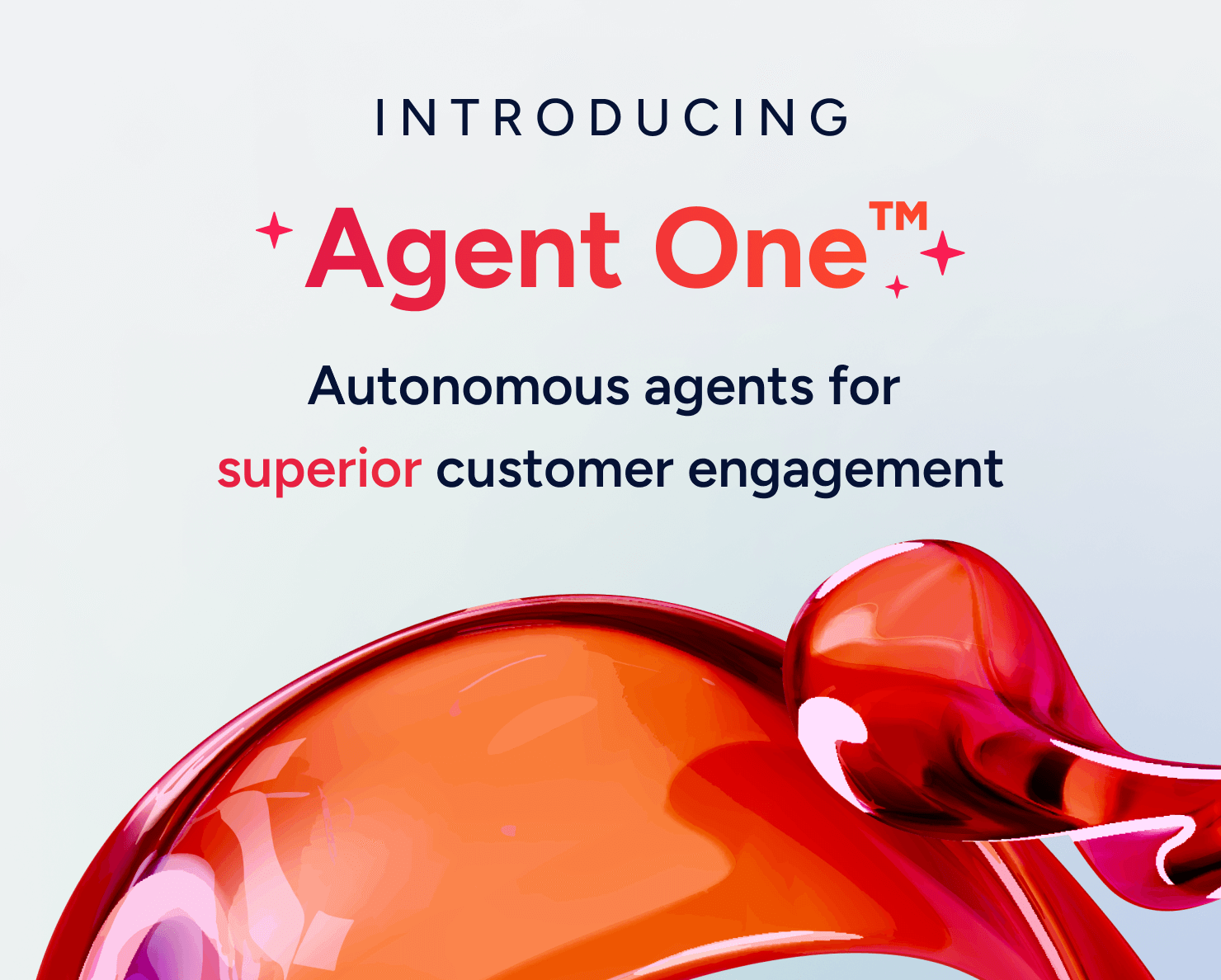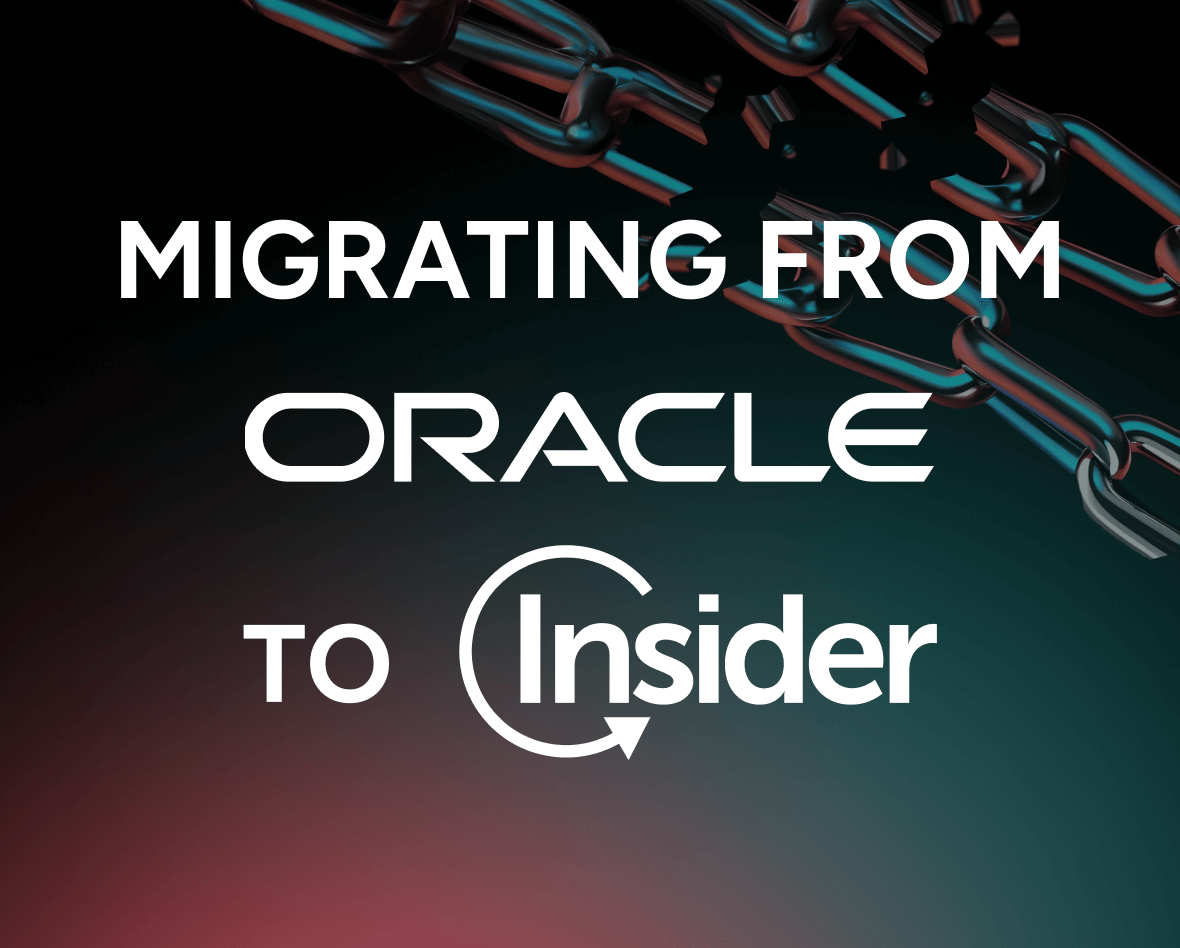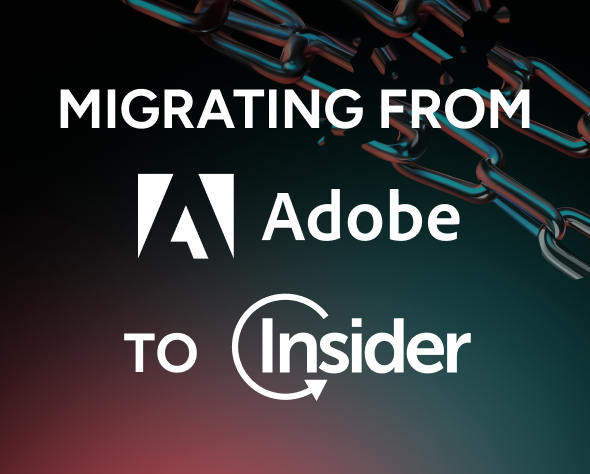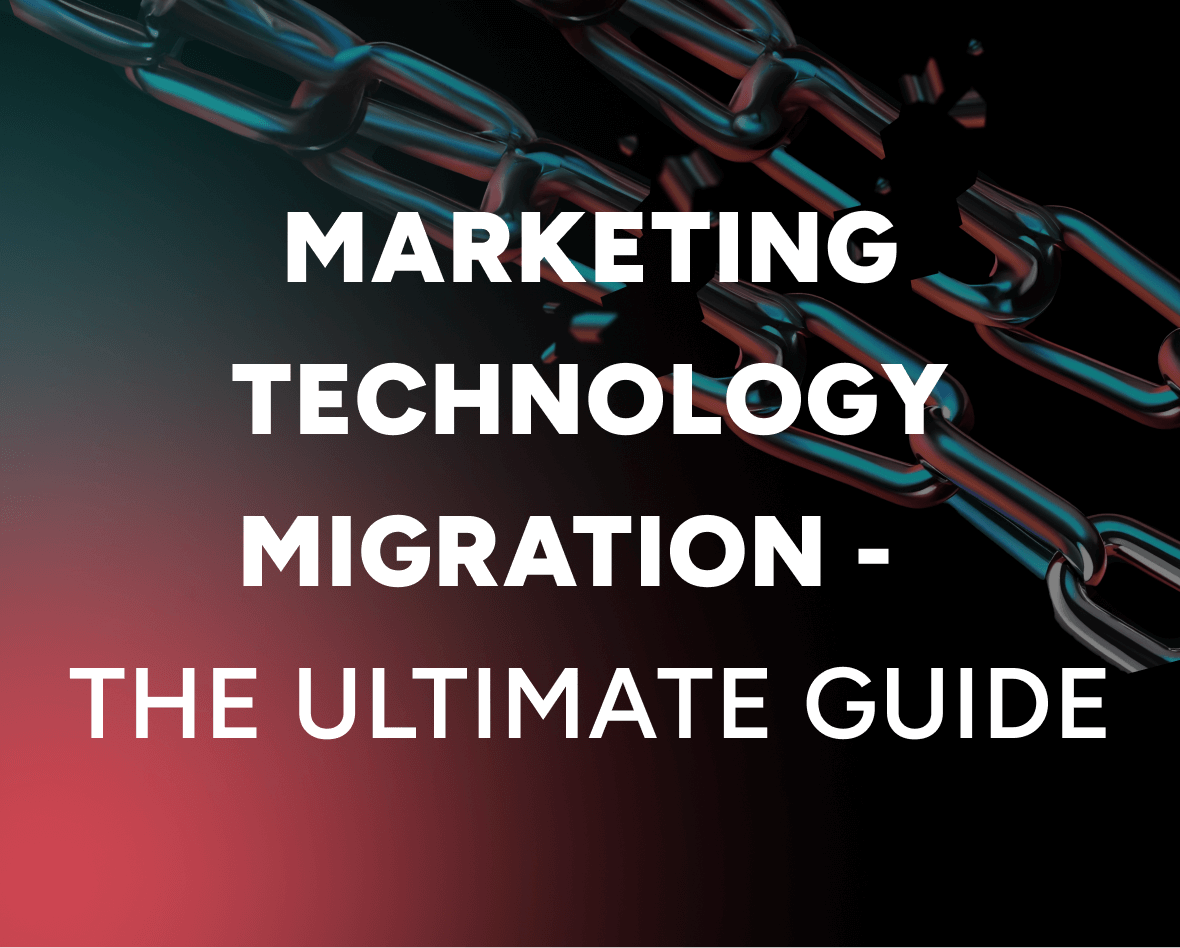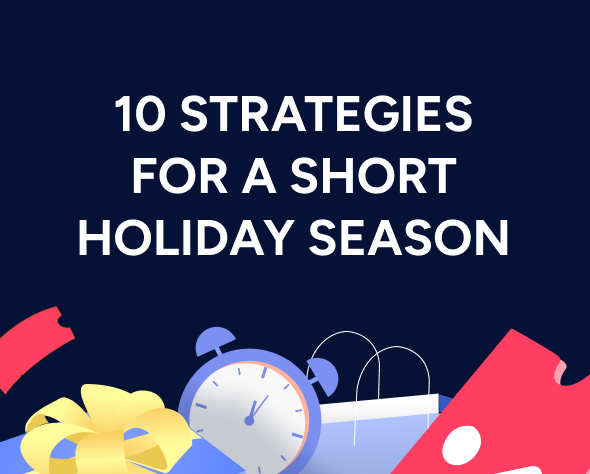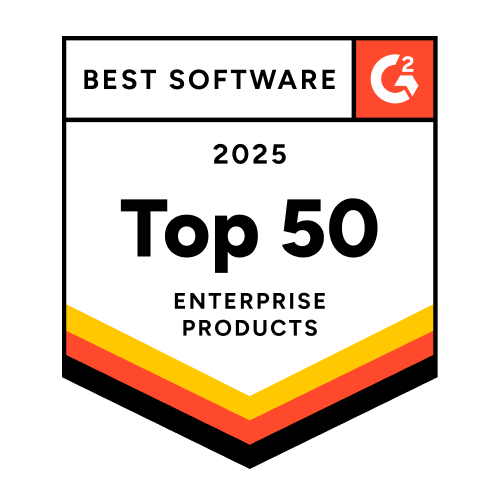How to use eCommerce personalization for revenue and retention
eCommerce personalization is often viewed as a way to simply boost sales. However, when done right, it accomplishes so much more. Specifically, personalization improves the online shopping experience for anonymous site visitors, new customers, and long-term brand loyalists. It shows people that you understand their needs by delivering relevant content, messaging, and product recommendations (instead of wasting their time and attentio
Updated on 30 Sep 2025
This guide will walk you through everything you need to know about eCommerce personalization — from the way it works to its benefits and the data you need to implement it successfully.
We’ll also explore real-life examples of online stores that used personalization to generate conversions, revenue, and retention.
What is eCommerce personalization and how does it work?
eCommerce personalization means delivering tailored content, messaging, and product recommendations to customers, based on their needs, interests, and preferences. The process requires:
- Reliable customer data. First-, second-, and third-party data can all power eCommerce personalization but in the age of cookieless marketing, data gathered from or provided directly by customers carries the most importance.
- eCommerce personalization software. These tools are built to analyze data, understand what customers want, and deliver personalized experiences across different channels (e.g., web, mobile, email, SMS, and so on).
The goal of eCommerce personalization is to make each customer feel like you understand them, get them to engage with your brand, and form long-term profitable relationships with them.
The benefits of eCommerce personalization
The reason why personalization is used to some extent by most eCommerce businesses is because it brings vital benefits. The most important of these include:
- Higher conversion rates (CVR). When everything customers see is tailored to their interests, driving conversions becomes much easier. For example, plenty of our customers increased their website CVT by implementing personalization — like Philips which achieved a 40.1% mobile CVR increase via personalized product recommendations.
- Better budget utilization. Higher CVRs mean a bigger percentage of your target audience is doing what you want them to do — whether that’s signing up for a newsletter or buying a product. This is fantastic from a cost-efficiency perspective, as a higher percentage of your budget is used successfully, instead of being wasted.
- More engaged customer base. The more personalized your messaging, the higher the chance customers will engage with it. This applies to pretty much all forms of messaging across any channel — e.g., website pop-ups, email product recommendations, messaging campaigns across SMS or WhatsApp, and so on.
- Higher revenue and retention. With higher customer engagement and more conversions, additional revenue is a given. And like we said, successful personalization means you can meet customers’ needs at every stage of their lifecycle with your brand, which creates more loyal customers and drives up retention.
Reliable data: The backbone of eCommerce personalization
Any form of personalization is only made possible by accurate data. Put simply, you must know your customers’ interests and preferences, so you can deliver what they need when they need it.
Most eCommerce businesses collect this data in a multitude of ways. For example, some years back, third-party data collected from various external sources (like other websites and platforms) was the cornerstone of most personalization strategies.
However, in the fast-approaching cookieless marketing era, zero- and first-party data take center stage. In other words, eCommerce marketers must focus on gathering data directly from visitors and customers, e.g., via surveys or by tracking their website activities.
Below, we’ll explore some key data points you can collect from anonymous visitors and known customers to build your understanding of their needs and launch successful personalization campaigns.
Anonymous visitor data
Anonymous visitors are those who haven’t provided any contact information or personal data yet (e.g., emails and phone numbers). Since they can’t be identified, many eCommerce sites don’t bother trying to give them a personalized shopping experience.
However, first-time visitors and other anonymous users make up the bulk of traffic for most eCommerce websites and ignoring their experience means you’re missing out on lots of potential revenue.
A solution that supports anonymous visitor personalization can tailor the onsite experience of these users using data like:
- The product pages they visited.
- The time they spent on your site.
- The items they added to their shopping carts.
- The last page they visited before leaving your site.
For example, Insider can store this data in an anonymous visitor profile against a session ID and deliver relevant product recommendations in real-time while visitors are browsing your site.
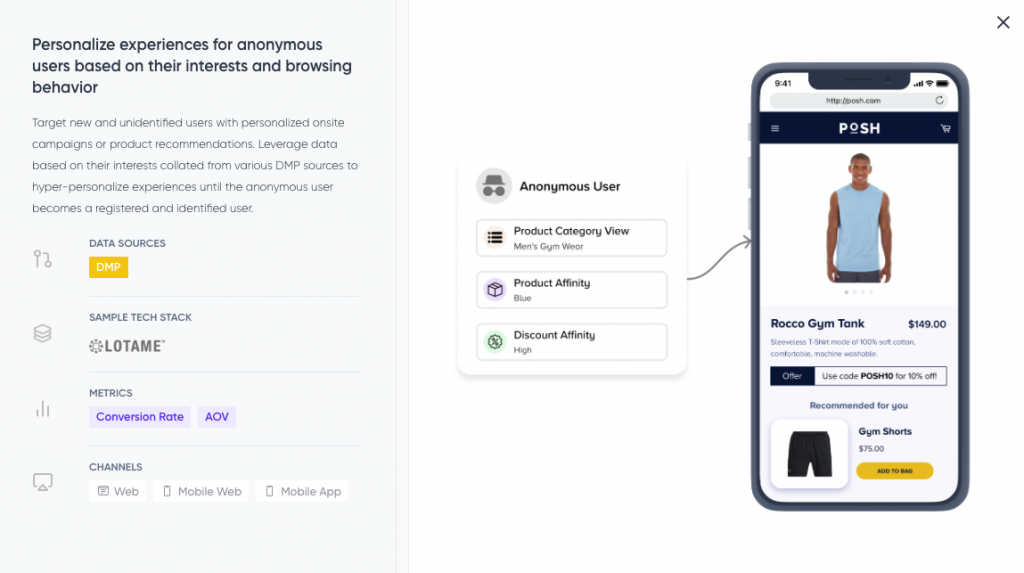
You can also use our solution to send web push notifications to these visitors with products that they recently viewed or added to their carts.
Customer data
When it comes to known customers, you have way more personalization opportunities. That’s because, in addition to the data points we discussed in the previous section, you likely have information about:
- Interactions with your brand across all channels.
- Channel reachability and preferences.
- Customer lifetime value (CLTV).
- Past purchases.
- Demographics.
- Locations.
While powerful, this data is often stored in disconnected tools, like customer relationship management (CRM) systems, analytics platforms, email marketing software, customer service solutions, and so on.
That’s why many online retailers choose to unify their data into a customer data platform (CDP) — a type of software built specifically for aggregating data from different sources into one convenient place. You can use an eCommerce CDP to create 360-degree views of all customers that serve as a solid foundation for all your personalization efforts.
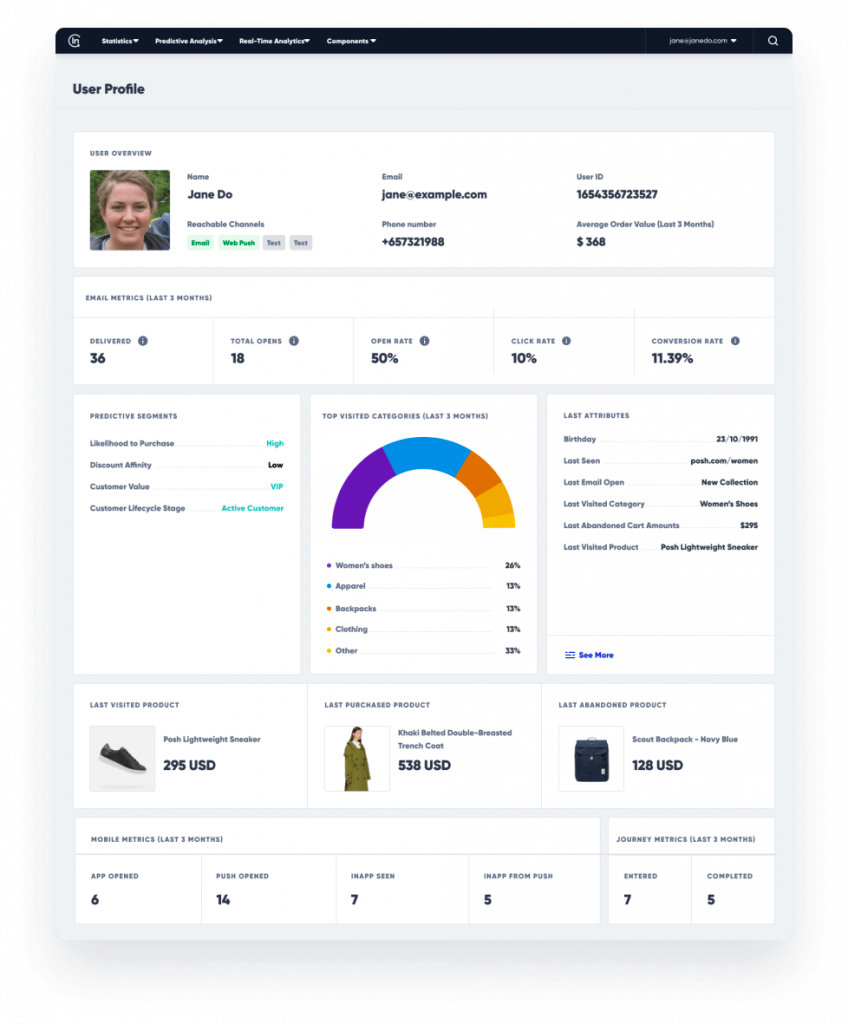
From here, tons of different tools can put this data into action. For example, a good product recommendation engine can analyze purchase histories, browsing behavior, and other data points to deliver tailored product recommendations across your website, mobile app, email, and other channels.
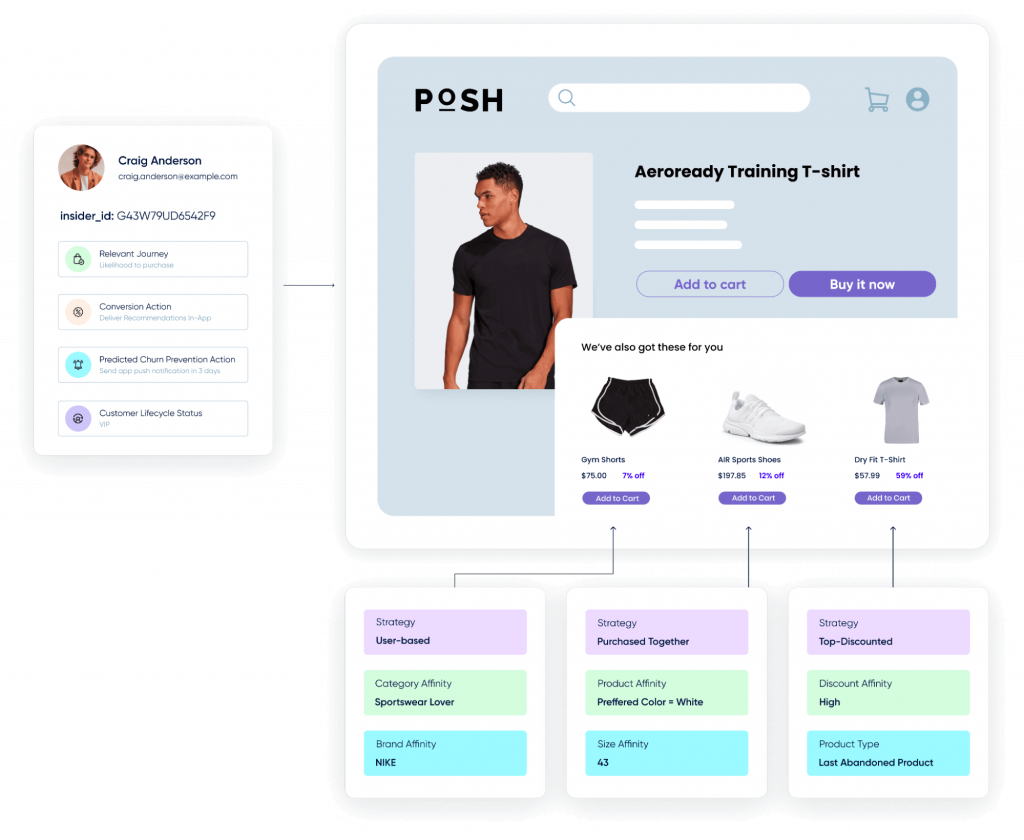
8 eCommerce personalization examples (across different channels and brands)
In this section, we’ll explore both theoretical and real-life examples of using relevant content, products, and messaging to achieve all sorts of business goals — like getting people to make repeat purchases, reducing cart abandonment, improving customer loyalty, and more.
#1 Product recommendations
Personalizing the product recommendations on your website and mobile app is a must for pretty much every eCommerce brand.
Showing relevant products — based on customers’ previous purchases, abandoned products, and category interests — can drastically increase your conversion rates, so you can make the most out of your marketing budget and drive revenue.For example, with an advanced personalization solution like Insider, you can use different personalization strategies, like adding a carousel of product suggestions tailored to each customer or showing related products that are frequently purchased with ones they just bought.
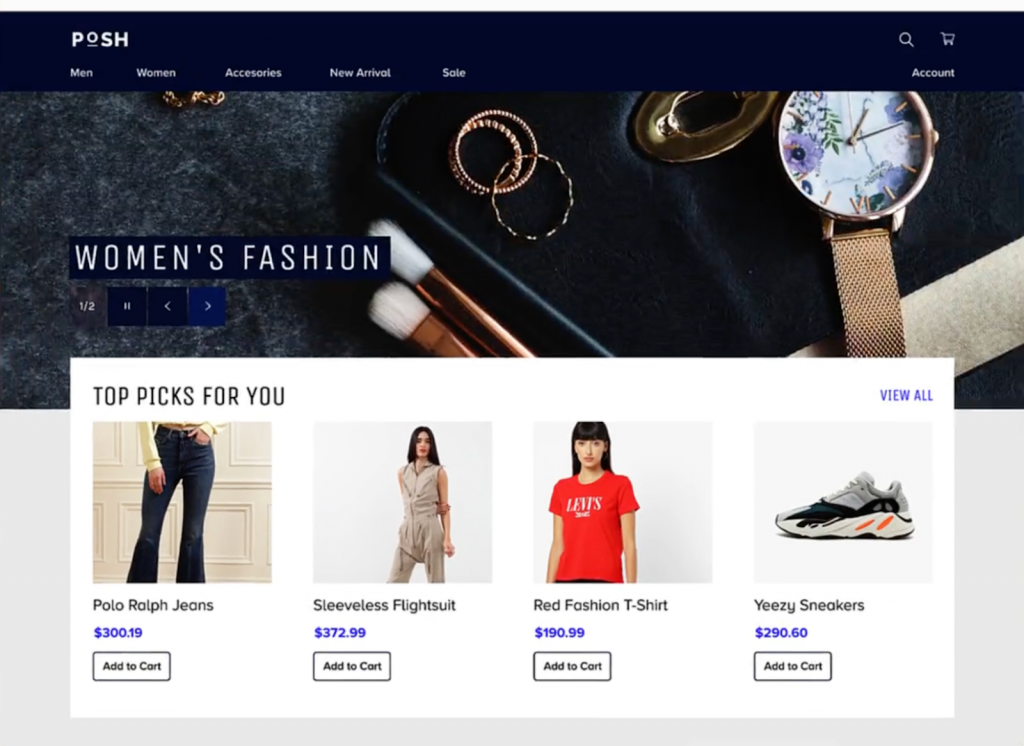
Avon is one of the companies that leverages our AI-powered Smart Recommender to deliver personalized product recommendations on their website. In one of their marketing campaigns, they targeted users about to exit the website with products closely linked to their previous behavior and intent.
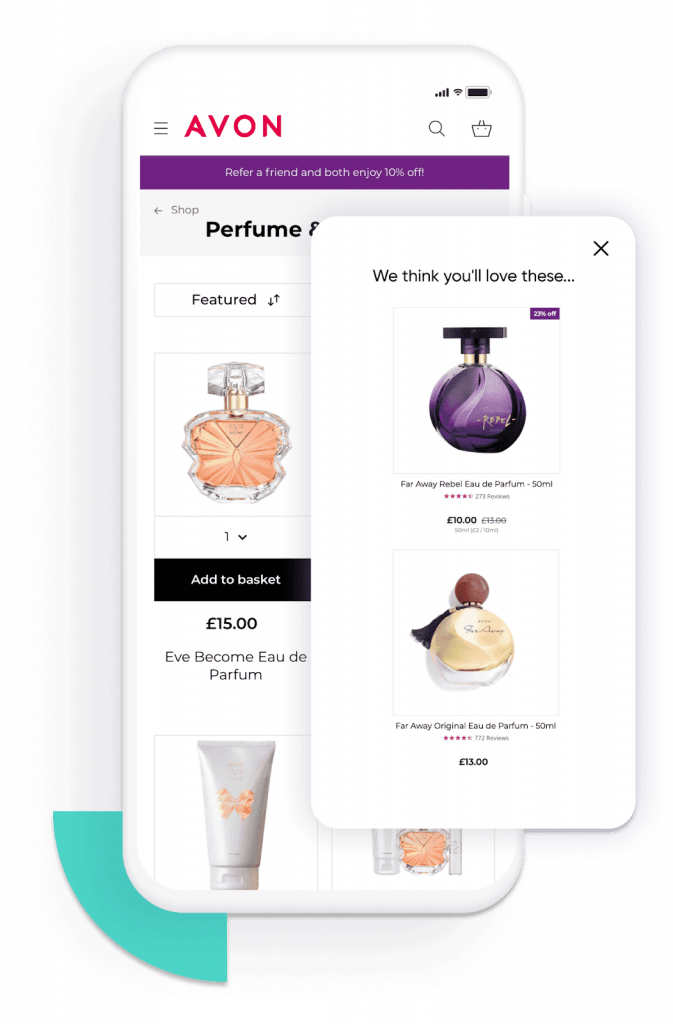
With this eCommerce personalization strategy, Avon increased the likelihood of purchase and kept visitors on the site for longer, leading to a 78% increase in conversions.
#2 Categories
Simplicity is a big part of getting people to buy online. Many eCommerce stores have an issue in this regard due to cluttered navigation that’s not personalized to the customer using it. This leads to a poor product discovery experience and missed sales opportunities.
Fortunately, personalization tools can help here. For example, Insider offers a Category Optimizer tool that changes how categories are presented to each individual customer. Adidas used Insider’s Category Optimizer on their mobile website to address the challenges that come with navigating a site on a smaller screen.
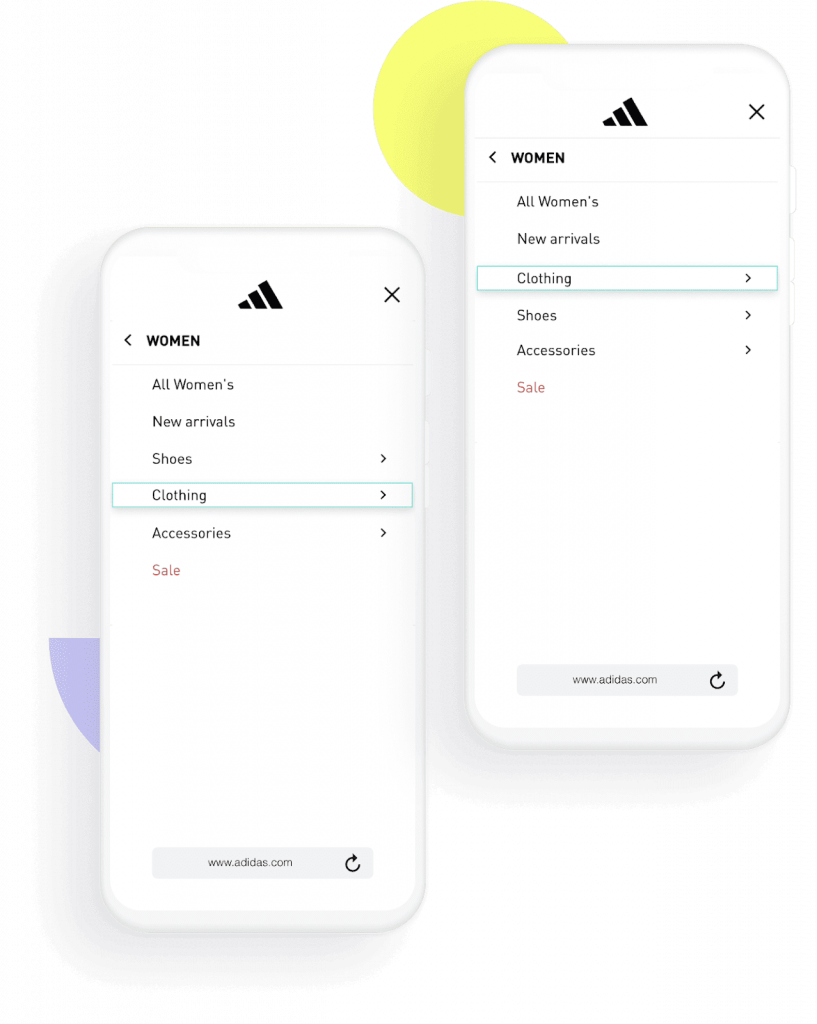
This tool optimized how categories were presented to each visitor based on their browsing history and other key data points. The result was a marked improvement in the mobile shopping experience, as shown by the 50.3% increase in mobile conversions.
#3 Banners
If your website has a large banner, chances are that’s the first and most important thing visitors will pay attention to. That’s why it’s essential to optimize your banners based on each users needs and preferences, especially if you’re showing new arrivals, discounts, and other similar promotions.
To learn more about the power of banner personalization, check out our case study with Sapphire. This fashion retailer used Insider to launch personalized banners on their homepage that highlighted new product launches and events (e.g., national holidays).
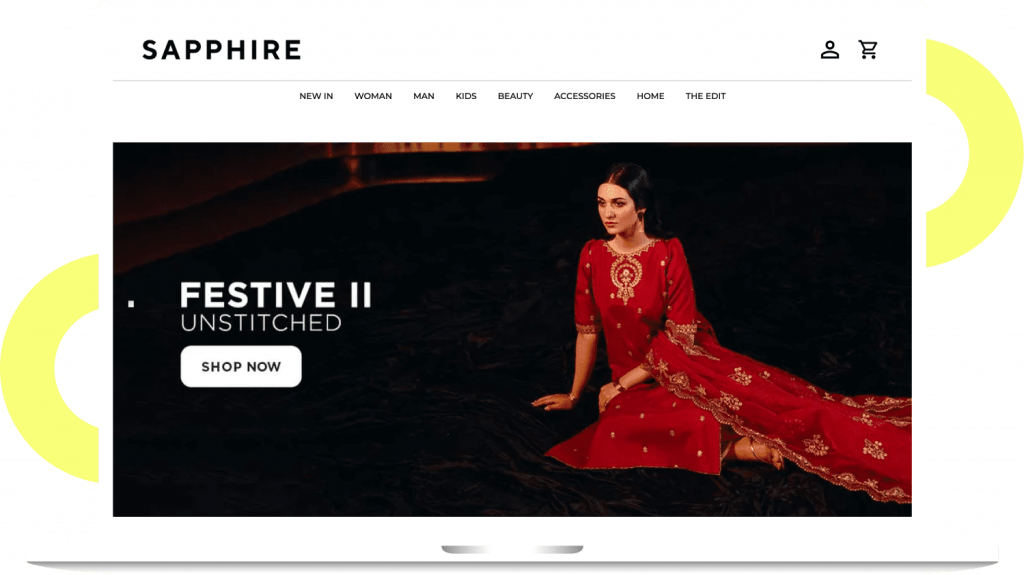
These banners led to a massive 244% increase in conversions, a 93% boost in AOV, and a 53x ROI. Plus, thanks to our easy-to-use templates, Sapphire’s marketing team can launch these personalization campaigns as quickly as possible, without any IT dependency.
#4 Site search
Most eCommerce stores offer some sort of search functionality that helps individual customers find what they’re looking for faster. However, in most cases, people don’t know exactly what they need, so it’s essential to guide them through the process.
That is where a good eCommerce site search solution comes in. These tools can deliver accurate results to every customer using your site’s search functionality, based on their behavioral patterns and improve the search experience as a whole.
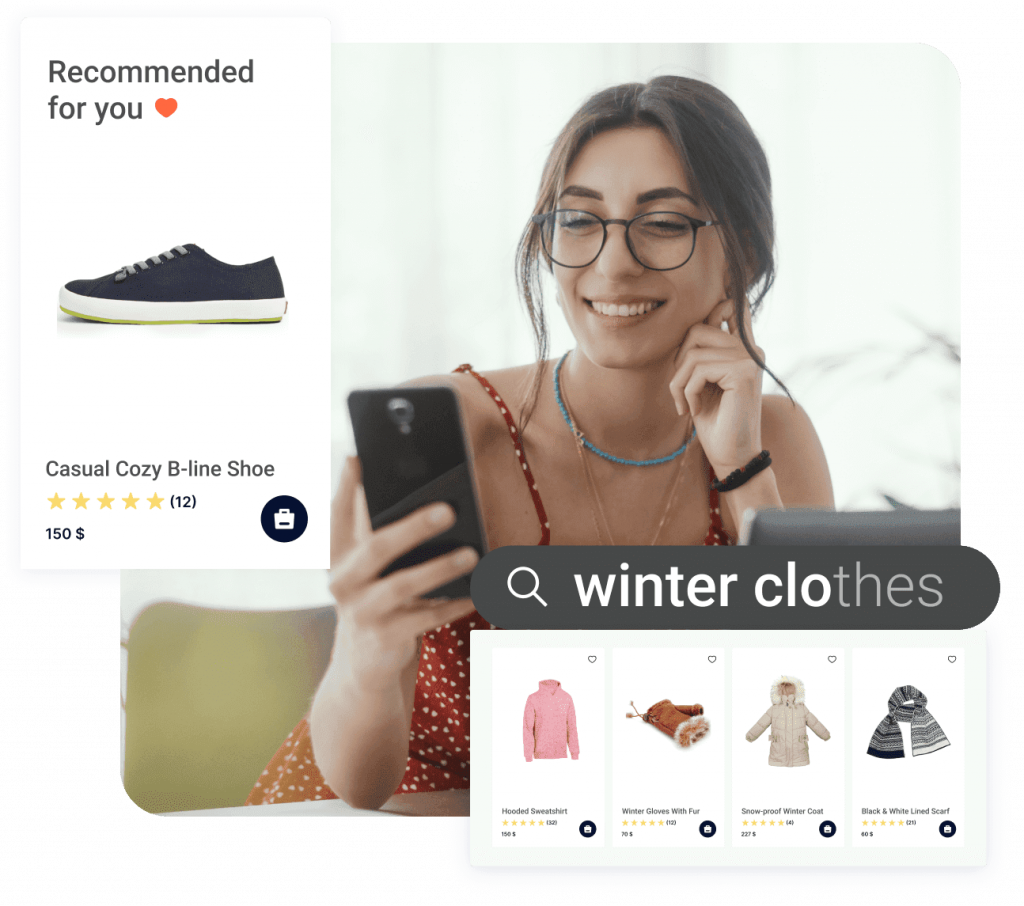
For example, Insider’s Eureka is an AI-powered site search and merchandising tool that can:
- Understand the intent behind each query and detect synonyms and typos.
- Deliver relevant search results for every query type (e.g., exact, product, or feature queries).
- Enable you to add sorting filters and faceted search, both of which streamline the search experience and let users find what they need faster.
These capabilities help you improve product discovery and can lead to lower bounce rates, high average order value (AOV), and more conversions.
#5 Online ads
Running ads across search engines and social media platforms has become much more competitive and expensive over the years. As a result, making your ads as targeted as possible is essential for teams looking to maximize their marketing spend.
Retargeting ads are a classic tactic for dealing with this challenge. However, you can take things to a whole different level by using predictive marketing.
For example, with Insider, you can easily segment customers based on what they did on your site or app — e.g., which products they visited, which ones they added to their carts, and so on.
Then, you can use our AI and machine learning algorithms to only target users with the highest likelihood of purchasing across Google, Facebook, and TikTok ads.
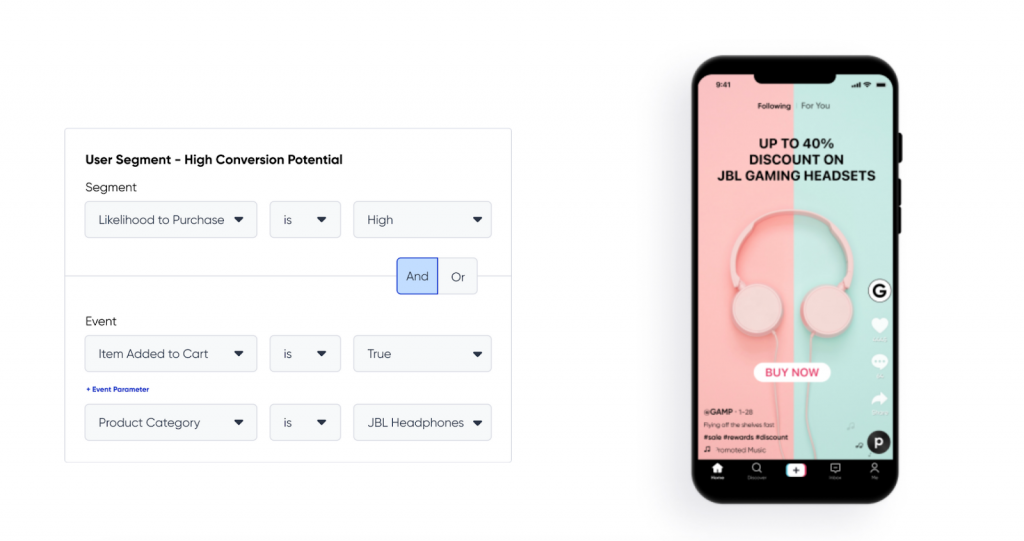
You can also rely on other predictive characteristics, such as discount affinity or predicted spending.
Fashion brand U.S. Polo Assn. achieved fantastic results with this strategy. They used Insider to target customers with the highest purchase intent with their Google Ads, which helped them achieve:
- A 311% increase in conversion rate.
- A 135% boost in return on ad spend (ROAS).
- A 58% reduction in customer acquisition costs.
#6 Email marketing
While email is the oldest digital marketing channel, many companies still send out the same old standard, non-personalized emails to their entire customer base. This inevitably leads to suboptimal conversion rates and tons of missed revenue from email campaigns.
Fortunately, there are plenty of ways to make your eCommerce emails more personalized. For example, you can include customers’ names, birthdays, or other milestones in the subject lines and body copy.
You can also employ more advanced personalization tactics by including tailored product recommendations inside each email. To do that, you’ll need a good product recommendation engine that also supports email as a channel.
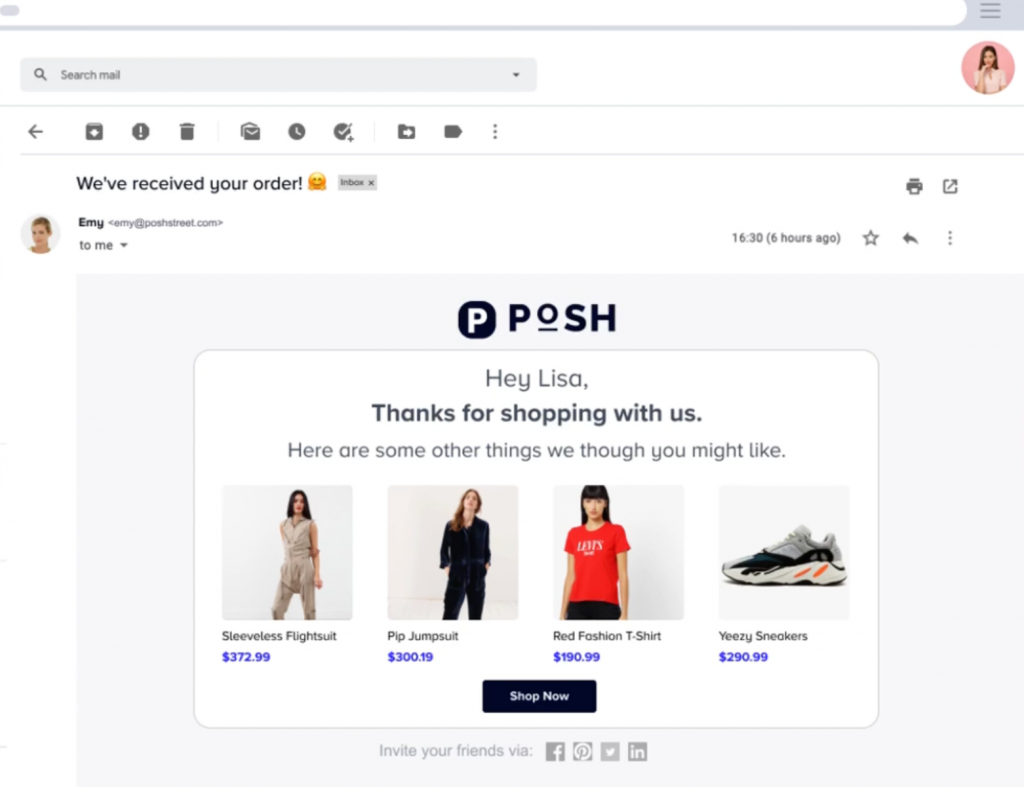
Jewelry brand Chow Sang Sang is a great example of the power of this strategy. Before working with Insider, the company was using a basic and inflexible email solution that didn’t allow for personalization based on real-time data.Thanks to our platform, the brand’s marketing team started leveraging crowd-sourced recommendations to create flexible email recommendations. Specifically, they can now source recommendations based on the interest displayed by their customers and select all these products to be promoted in the email with just one click.
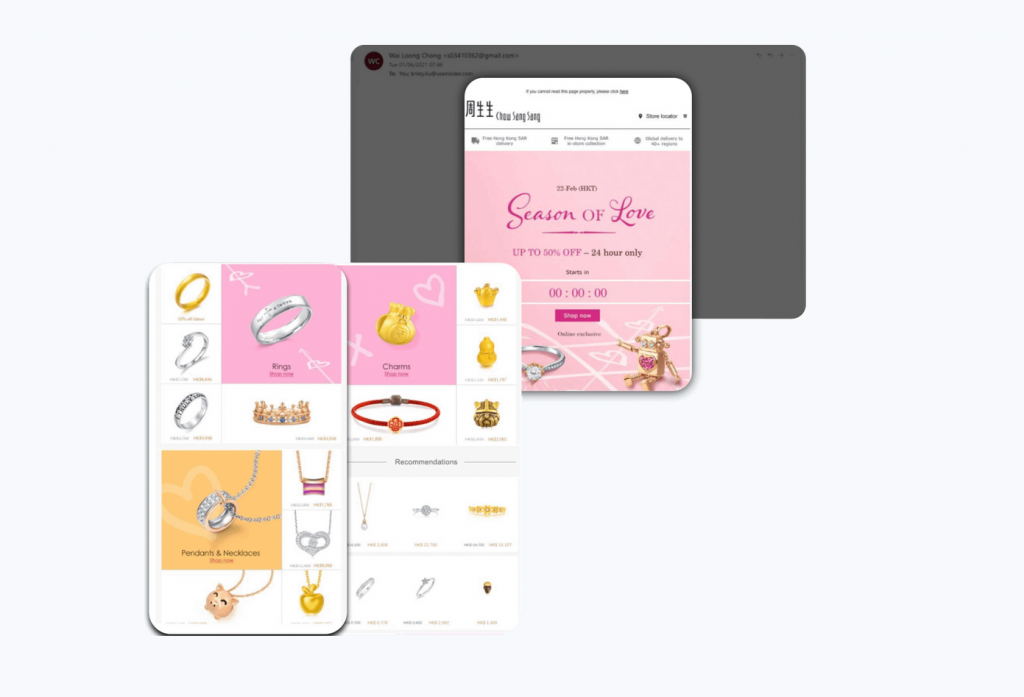
The results from this new approach were a conversion rate uplift of more than 23.5% and a 59% uplift in average session duration.
#7 Messaging channel communications
Messaging channels like SMS, WhatsApp, and Facebook Messenger are the best way to engage customers, drive product discovery, and recover abandoned carts for many eCommerce businesses. And just like with email, it’s essential to personalize your communications across those touchpoints to achieve the best results.
Again, this can mean adding customers’ names, milestones, cart items, and much more. For example, if you’re using Insider, you can leverage messaging channels by:
- Sending targeted promo messages, based on customers’ previous purchases and preferences.
- Triggering strategic price drop or back-in-stock alerts for products they’ve shown interest in.
- Reminding them about upcoming events at specific times (e.g., a day or a week before).
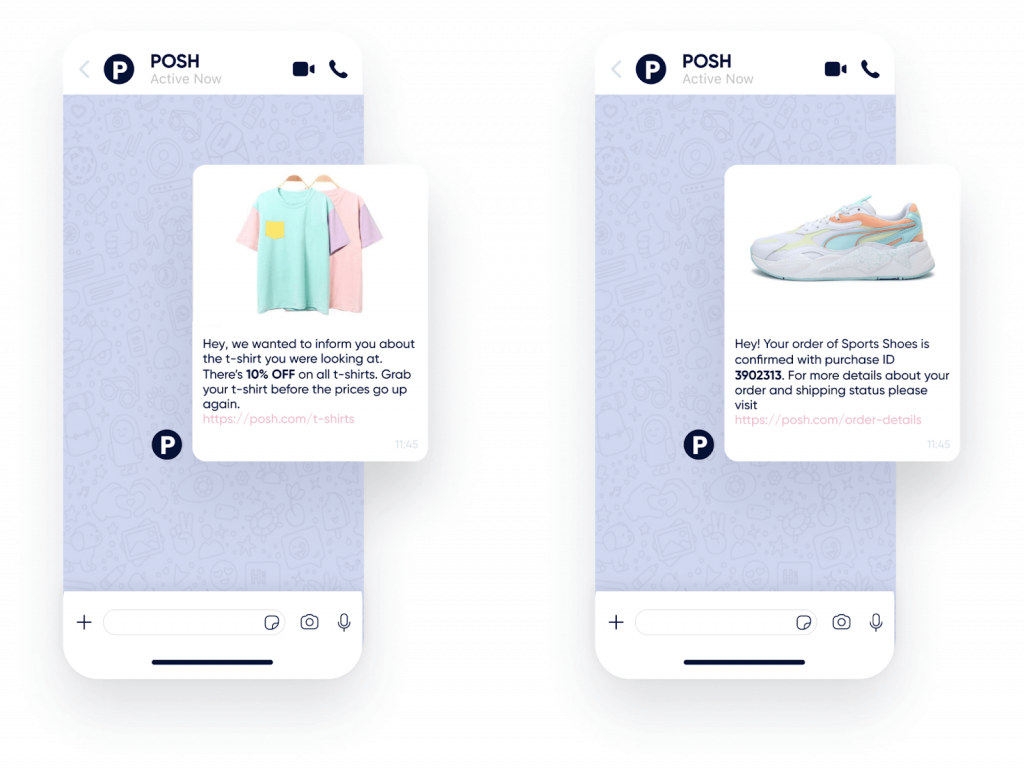
For a real-life example, check out our case study with Picniq. This UK-based brand wanted to move away from their non-personalized batch and blast emails, so they chose Insider as their solution for engaging customers on messaging channels.
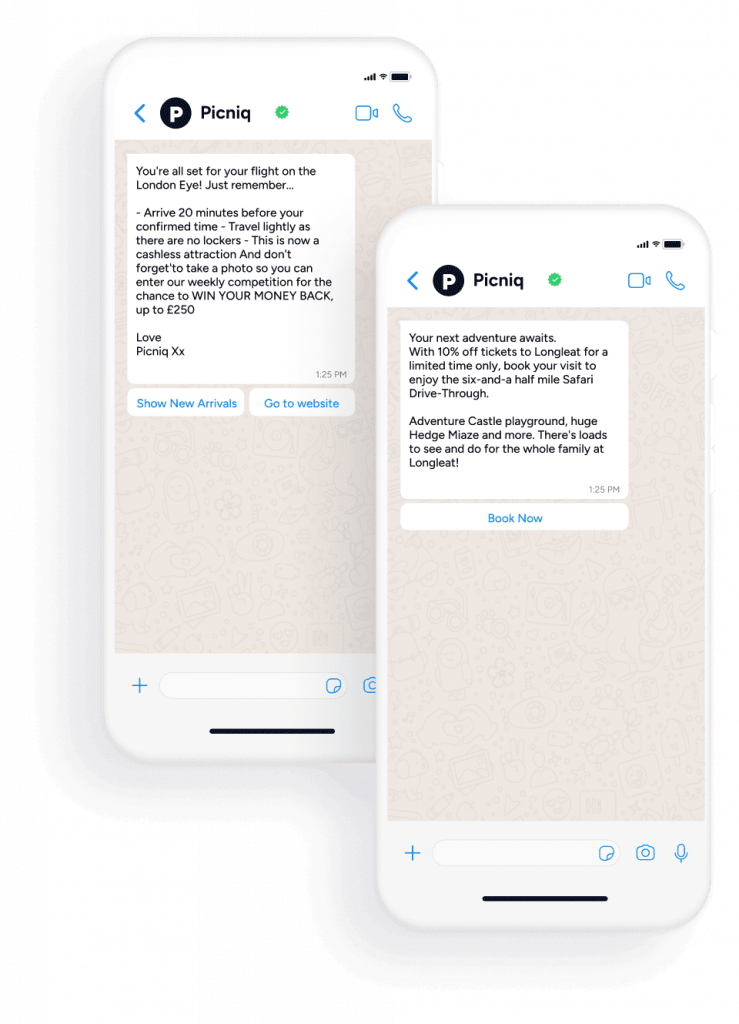
Specifically, the company started leveraging WhatsApp to send personalized messages focused on recovering lost revenue from browser abandoners and enhancing relationships to increase return customers. This helped them achieve open rates of over 80% and a 5x ROI from WhatsApp.
Bonus: Omnichannel personalization
So far, we’ve discussed the ability to personalize individual elements across your website and communication channels. However, the true potential of personalization lies in tailoring each step of the eCommerce experience to build a cohesive journey.
You can do that with a customer journey builder, like Insider’s Architect. This AI-powered solution lets you build, automate, and personalize simple flows and complex omnichannel campaigns from one place. You can even A/B test different messages, channels, and campaign flows against each other.
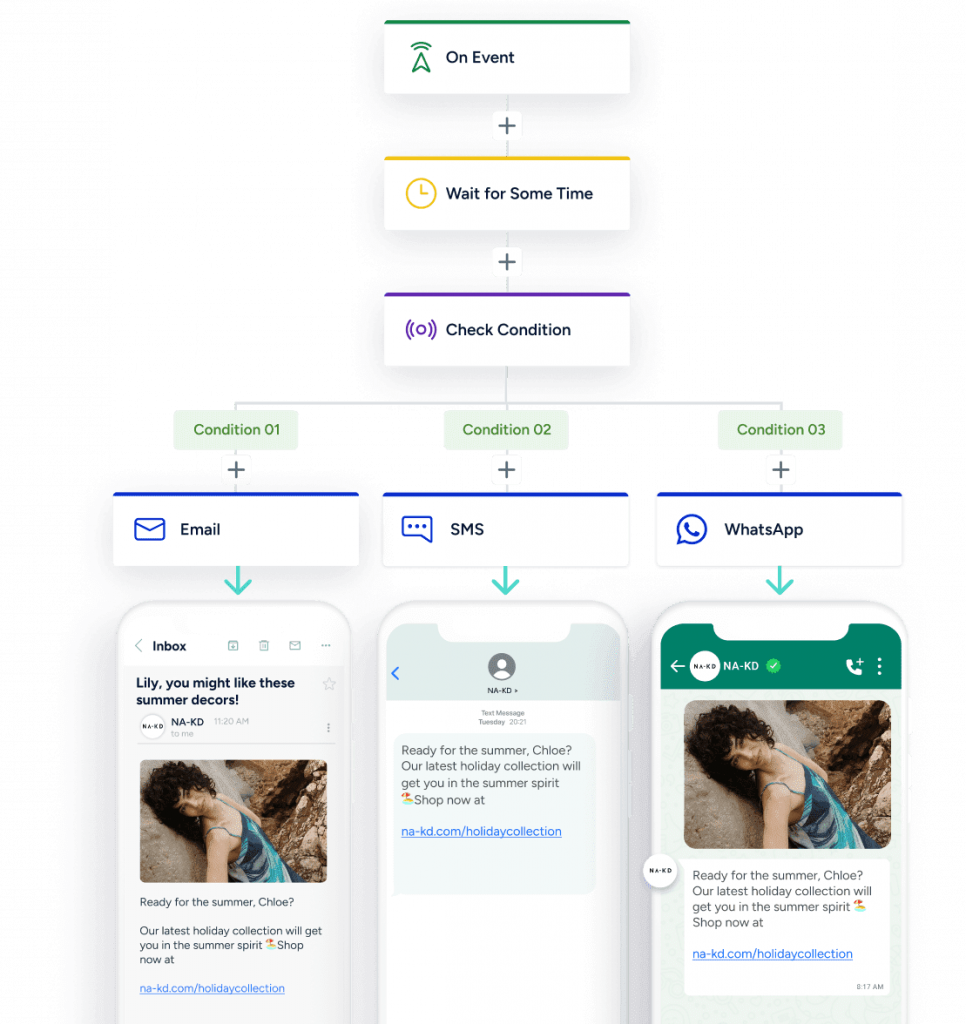
Put simply, a customer journey builder lets you extend your personalization efforts across all touchpoints customers have with your brand. That way, each step of their journeys is personalized in real-time based on their previous interactions.
For a real-life example, check out our case study with NA-KD. This eCommerce brand used Insider to launch data-driven, personalized journeys across five channels, leading to a 25% increase in customer lifetime value (CLTV) and a 72x ROI in 12 months.
Achieve eCommerce personalization at scale with Insider
Insider is the ideal personalization platform for enterprise and mid-sized eCommerce brands looking to tailor their customers’ experience across all touchpoints — like their website, mobile app, emails, messaging channel communications, and more.
Our platform has been ranked among the best:
- Personalization engines (by Gartner)
- Omnichannel marketing platform (by IDC).
- eCommerce personalization solutions (by G2).
Plus, with Insider, you can:
- Aggregate your customer data and get an accurate, 360-degree view of each customer. This is crucial for overcoming data silos and setting a solid foundation of reliable data for your personalization campaigns.
- Unify your martech stack, as opposed to using a combination of point solutions. Our unified marketing platform lets you build, automate, and analyze campaigns across all channels, so you don’t have to constantly switch between tools and improve the ROI from your martech stack.
- Predict customer behaviors with our AI-powered intent engine, such as the likelihood to purchase or engage on a specific channel, discount affinity, and more.
- Leverage cross-sell and upsell opportunities at key moments of the customer journey.
- And much more!
Lastly, our experienced support team will help you get started as quickly as possible and ensure you’re using the right data sources and personalization tools for your specific needs.
Click here to book a demo with our team and learn how Insider can help you reach your business goals.
Frequently Asked Questions
B2B personalization is all about nurturing long-term relationships and addressing the specific needs of organizations (think: customized content for decision-makers, account-based recommendations, multi-stage buying journeys). B2B buyers have complex approval chains, longer sales cycles, and higher stakes, so personalization focuses on relevance to job roles, company priorities, and timing in the buying journey.
B2C personalization is much more instant and emotional. It caters to individual customers’ personal tastes, shopping behaviors, and moments of intent, like recommending a sneaker to someone who just browsed running gear, or sending birthday offers over WhatsApp. It’s a quick way to convert, but each shopper needs to feel seen and valued from their very first interaction.
AI has raised the bar for ecommerce personalization. Simply showing customers products they viewed last week is now table stakes. With AI, you can recommend products that are personalized to each customer’s unique preferences. Beyond personalization, AI breaks down data silos, unifies customer profiles, and uncovers subtle micro-trends, sharpening your campaigns to be more relevant and consistently more profitable.
The “4 Rs” of personalization are:
1. Right Person: Target your specific shopper (with a 360-degree view, including behaviors, preferences, and location).
2. Right Message: Serve content, offers, and recommendations that are relevant to that individual—not just generic “Hi, first name!”.
3. Right Moment: Engage when the recipient is most likely to pay attention or convert (think: abandoned cart reminders, back-in-stock alerts).
4. Right Channel: Reach them where they’re already active, whether that’s SMS, WhatsApp, email, on your website, or your mobile app.
Ecommerce personalization accelerates product discovery, delivers highly relevant recommendations, and crafts a seamless, intuitive journey unique to every customer. Each product suggestion, message, and advertisement is thoughtfully tailored to their individual preferences and behaviors. By consistently providing relevant experiences across every touchpoint, especially for anonymous visitors and mobile shoppers, you drive higher revenue and build lasting customer relationships.
Start with the basics, but don’t stop there. Tracking conversion rates, average order value (AOV), and customer retention numbers are essential as these metrics show a direct impact. But the real magic is in holistic measurement:
Session duration: Are customers engaging longer after personalization?
Click-through rates (CTR): Are your messages cutting through the noise?
Revenue and ROI uplift: Can you attribute incremental sales to specific personalized flows?
Abandonment rate reduction: Are carts and browsing sessions converting at a higher rate?
Advanced platforms like Insider provide dashboards to monitor every detail, such as a personalized mobile banner that lifted conversions by 244% or a tailored WhatsApp campaign that drove a 5x ROI. And don’t forget to ask for customer feedback; sometimes the “thank you for showing me what I needed” is the strongest metric of all.

